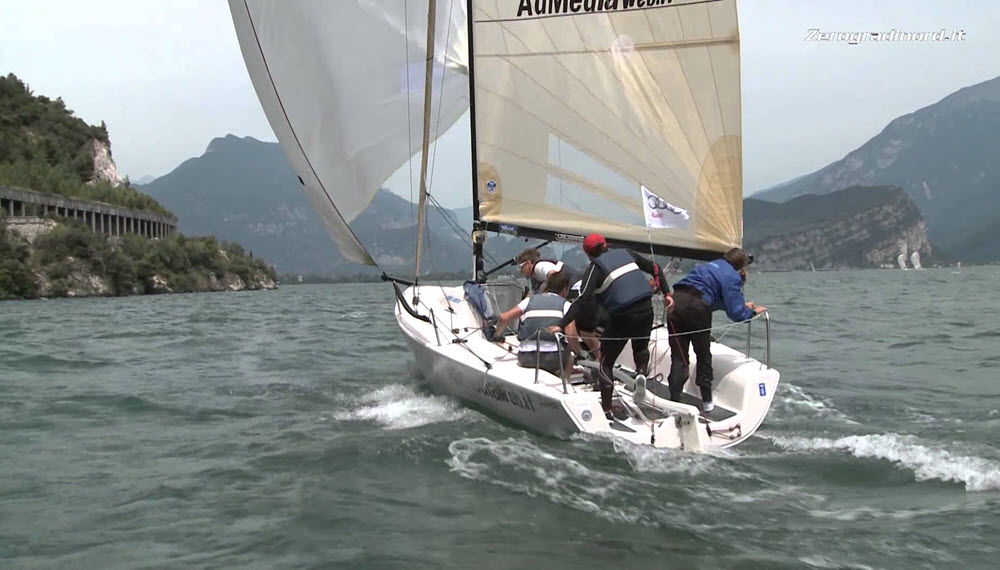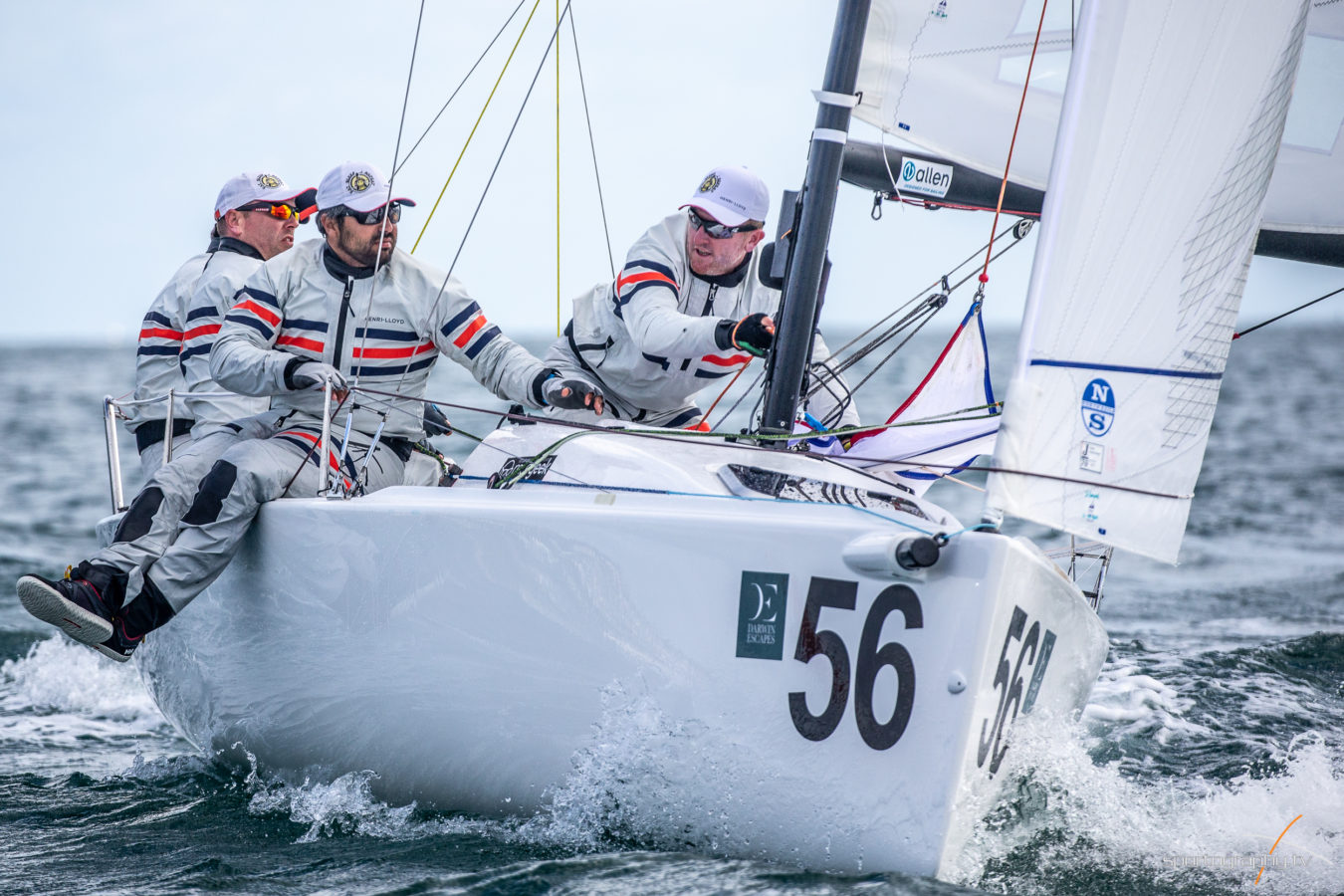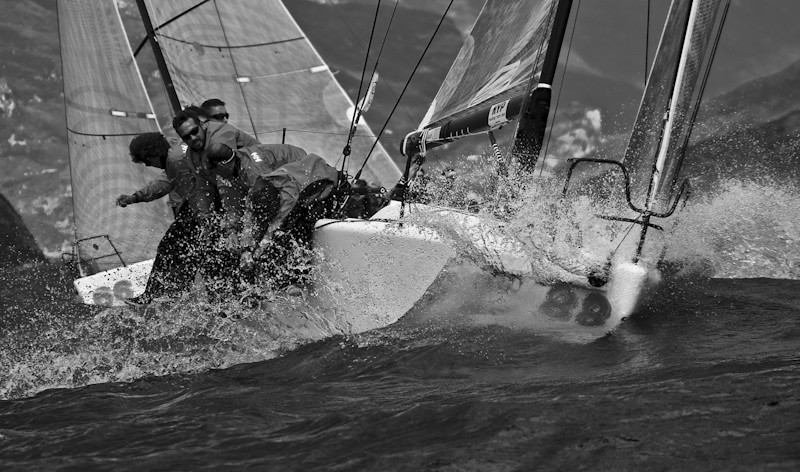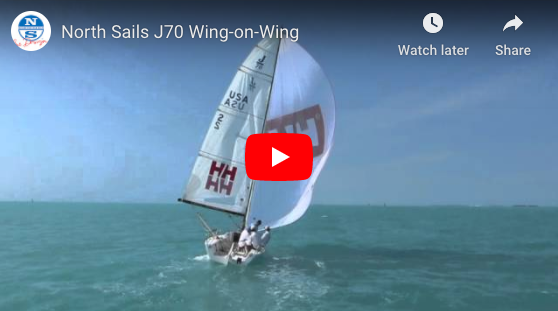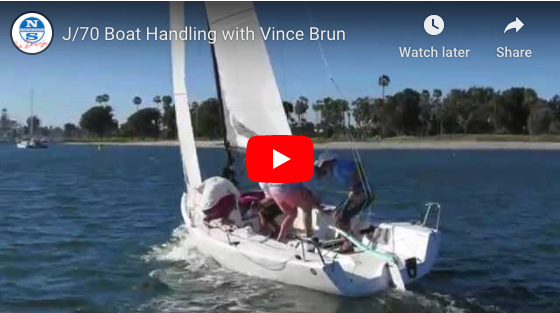Chris Snow of North Sails One Design in the USA describes his experience and success in late 2015 of competing in the J/70 class, and shares some of his go-faster tips here....
Recently I steered a J/70 in my first event, the North Americans, here in my home town of San Diego. I had crewed on the boat for a couple of years and thought I knew it pretty well. Steering is different (not harder) that crewing. We finished fifth overall which is a good start. Here are ten things I learned from this experience that will help you in almost any boat.
1. Have clear consistent marks on your jibs sheets, both windward and leeward. You must have marks on the deck and clear marks on the sheets as reference points to duplicate fast trim setting on both tacks.
2. Do not steer the boat—rather steer as little as possible. Any small boat slows when the tiller is moved. I purposely held the tiller extension on my thigh upwind to minimize movement. Do your best to steer with crew weight-this applies to any boat.
3. The spinnaker trimmer steers the boat downwind. Be sure the spinnaker trimmer is constantly talking about pressure in the sheet downwind and telling you when to come up and down to optimize your angle downwind. She/he can feel that 100% better than you, the helmsman, can.
4. Check for weeds constantly. In San Diego we had lots of weed and kelp. There is nothing slower than having weed or kelp on your rudder or keel. Keep a constant lookout and visually check if you have any doubts.
5. Have a tuning matrix and follow it. Check your sailmakers tuning guide for rig tensions at different wind speeds. Make a chart of turns needed on your boat to get from one to the other. Follow it and set the rig back to base each time you return to the dock. This eliminates variables and second guessing and lets you concentrate on the race.
6. Sail the boat at a constant angle of heel upwind. Very important to keep the boat at a constant angle of heel upwind. Use the head stay against the horizon as a guide. If you cannot hold the boat on a constant angle of heel the boat is either underpowered or overpowered. Decide which and adjust.
7. As helmsman downwind, help the crew with what is happening with the shifts downwind. It is hard for the crew to know whether or not you are getting lifted or headed downwind (upwind it is easy) helmsman should keep an eye on the compass downwind and communicate to the crew what he/she is seeing.
8. On the J/70 learn to sail wing and wing easily. Practice how much you need to turn the boat downwind to go to wing and wing and what conditions is works in (flat water, moderate winds). This is a tool that can come in very handy if you have it available but it takes some practice so as not to be too disruptive.
9. Trust your Velocitek! This little wonder tells you how far from the line you are. Get good “pings” on both ends (be sure the line is set first) and trust it. I found it very helpful to have one of the crew calling time and another calling distance to the line converted to boat lengths (the unit displays in meters). You can use it to help you know when to accelerate for the line. See sidebar.
10. Sail the boat like a dinghy. All smaller one designs benefit from being sailed like an even smaller boat. Use your crew weight always to steer, move forward and aft depending on wind and sea state. Get good at roll tacking and jibing in lighter air. Heel the boat to leeward to round the leeward mark, etc… All boats will benefit from this.
To get more tips on how to use the Velocitek, get Chris's tips here....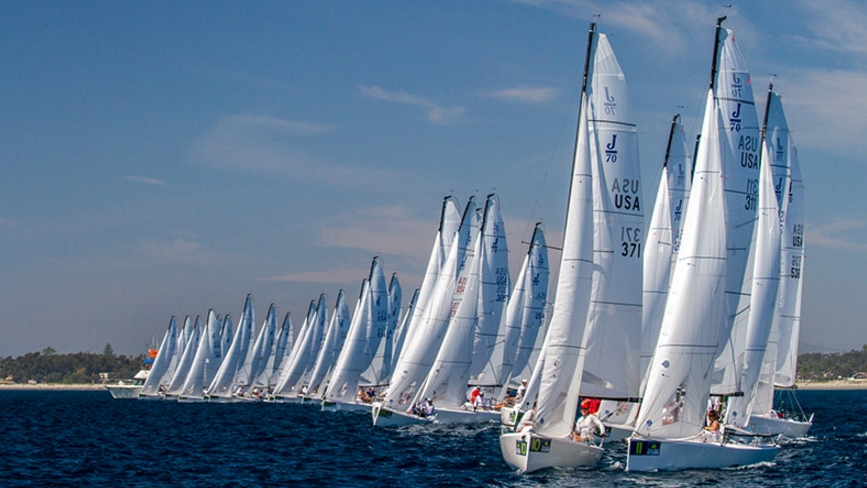
© North Sails: J/70 start in San Diego

